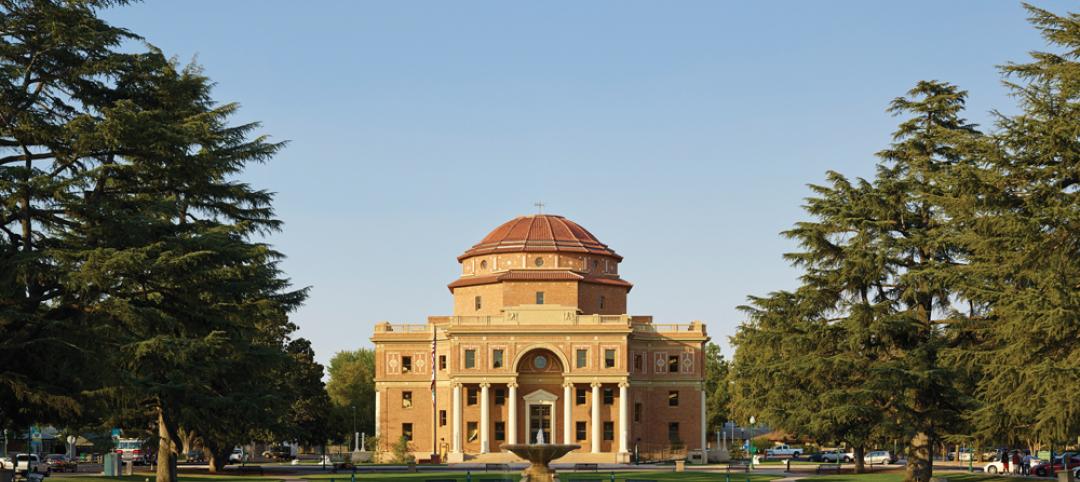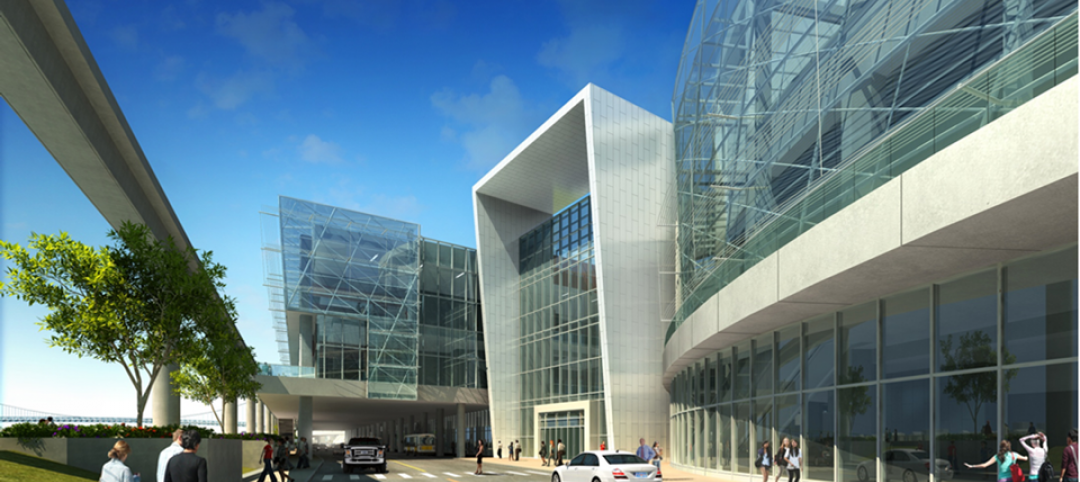Work was recently completed on a new Pennsylvania State Archives building in Harrisburg, Penn. The HGA-designed, 146,000-sf facility offers numerous amenities, including computers, scanners, printers, a kitchenette with seating, lockers, a meeting room, a classroom, an interactive video wall, gallery, and all-gender restrooms. The features are all intended to provide a welcoming and comfortable environment for visitors.
The state’s Division of Public Records was created in 1903. It became recognized as its own bureau upon joining the Pennsylvania Historical and Museum Commission (PHMC) in 1945. By 2000, its first permanent home in the Capitol Complex was reaching capacity and its low floor-to-floor height, together with a small floor plate, affected operational efficiency and would not allow for necessary environmental upgrades.
The goal was to find a site close to the Capitol Complex, and an urban parcel in a neglected neighborhood was selected. Built amid the few remaining rental row houses, light commercial structures, and the city’s rail yards, the facility is intended to have a positive impact on the neighborhood and city.
The building’s features include:
Collections space: A glazed-brick volume and high-thermal-mass concrete structure forms the body of the building, housing acid-free boxes and flat-file maps on high density shelving. The rectangular volume is windowless, well insulated, and projective. Total storage on three floors is 47,000 sf with space for growth, and 12-foot-tall high-density shelving makes the collections rooms highly efficient. Archives’ storage rooms are tightly controlled to keep out all daylight
Mechanical systems: A metal-clad mechanical bay links efficient HVAC systems to archive rooms on each floor, providing tightly modulated temperature and humidity to each kind of environment and material—paper, print photography, or film.
Public space: A double-height glass and aluminum pavilion set in a public garden with native plants allows for individual and group research with a sense of openness and accessibility.
The facility was designed to provide a climate resilient, durable, 50-to 100-year space to protect the archives while enduring extreme conditions. Areas of concern included railroad accidents, extreme or intense precipitation, theft, pests, moisture/mold growth, extreme wind, excessive snow load, and power failure.
To address the railroad yard disaster concern, a sensor was specified for the mechanical louvers that would shut down air intake if any harmful chemicals at elevated concentrations are detected. To mitigate extreme precipitation, no roof drains or roof penetrations are located over the archive rooms. Rain landing on the low slope roof runs down to roof drains over the mechanical rooms.
To prevent theft, security from the facility includes cameras and restricted access to the original documents room where staff members monitor visitors’ movements. Staff entry and exit paths with security systems are choreographed as well, for additional security.
HGA negotiated with electric utility Pennsylvania Power and Light to get two points of electricity service, one primary and one backup, each arriving from a different buried feeder line path to the site. In addition, the facility includes a standby generator with 48 hours of fuel capacity.
Ash wood was used for all interior building woodwork. Now disappearing across the country due to the Emerald Ash Borer, the wood wall panels will one day illustrate the beauty of the once-common native tree. Additionally, the site’s original granite street curbs were used as planter curbs and boulders found buried there were used as landscaping features in the public garden. The stone for the exterior pavers, interior floors, and the front desk was quarried in the Appalachian Mountains, and the glazed brick was manufactured in Pennsylvania.
On the project team:
Owner and/or developer: Commonwealth of Pennsylvania
Design architect: HGA and Vitetta
MEP engineer: HGA
Structural engineer: HGA
General contractor/construction manager: Mascaro Construction
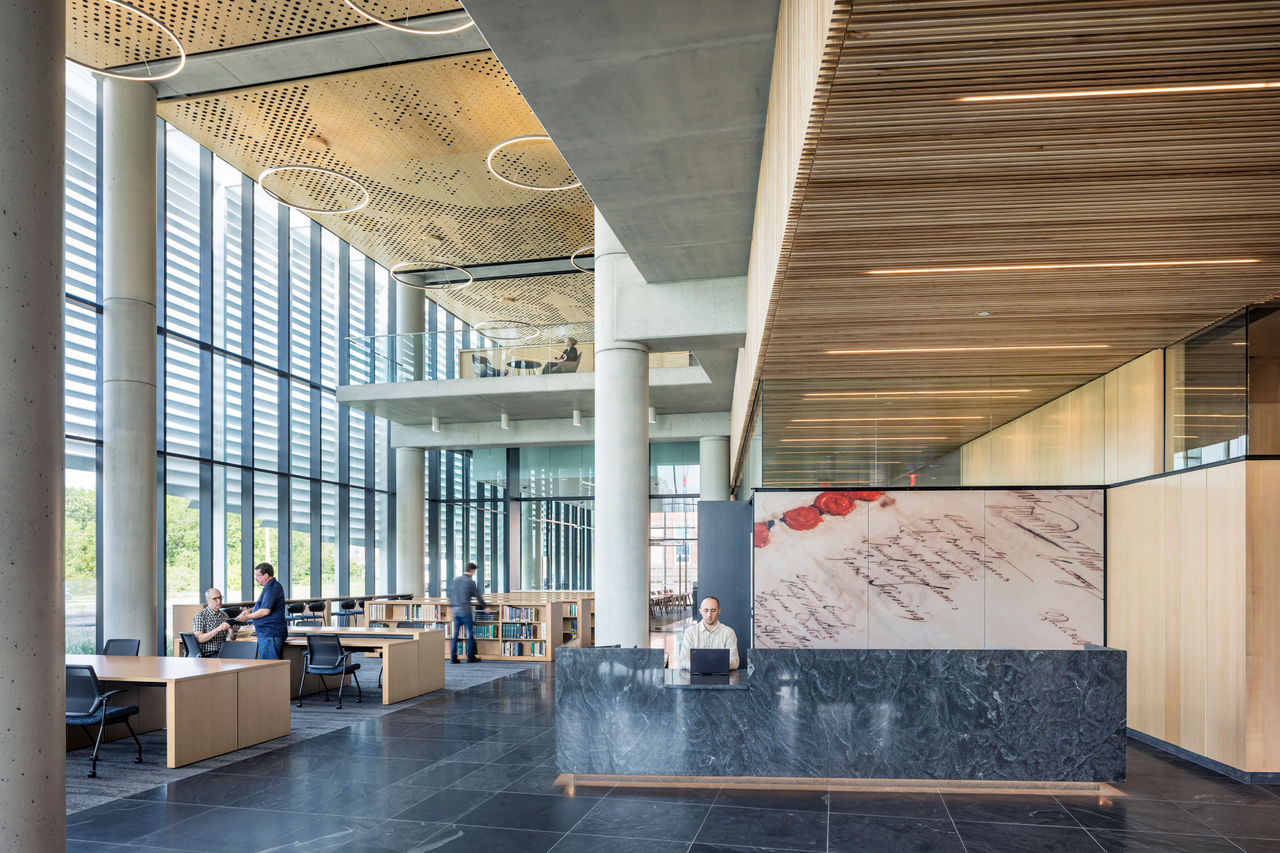
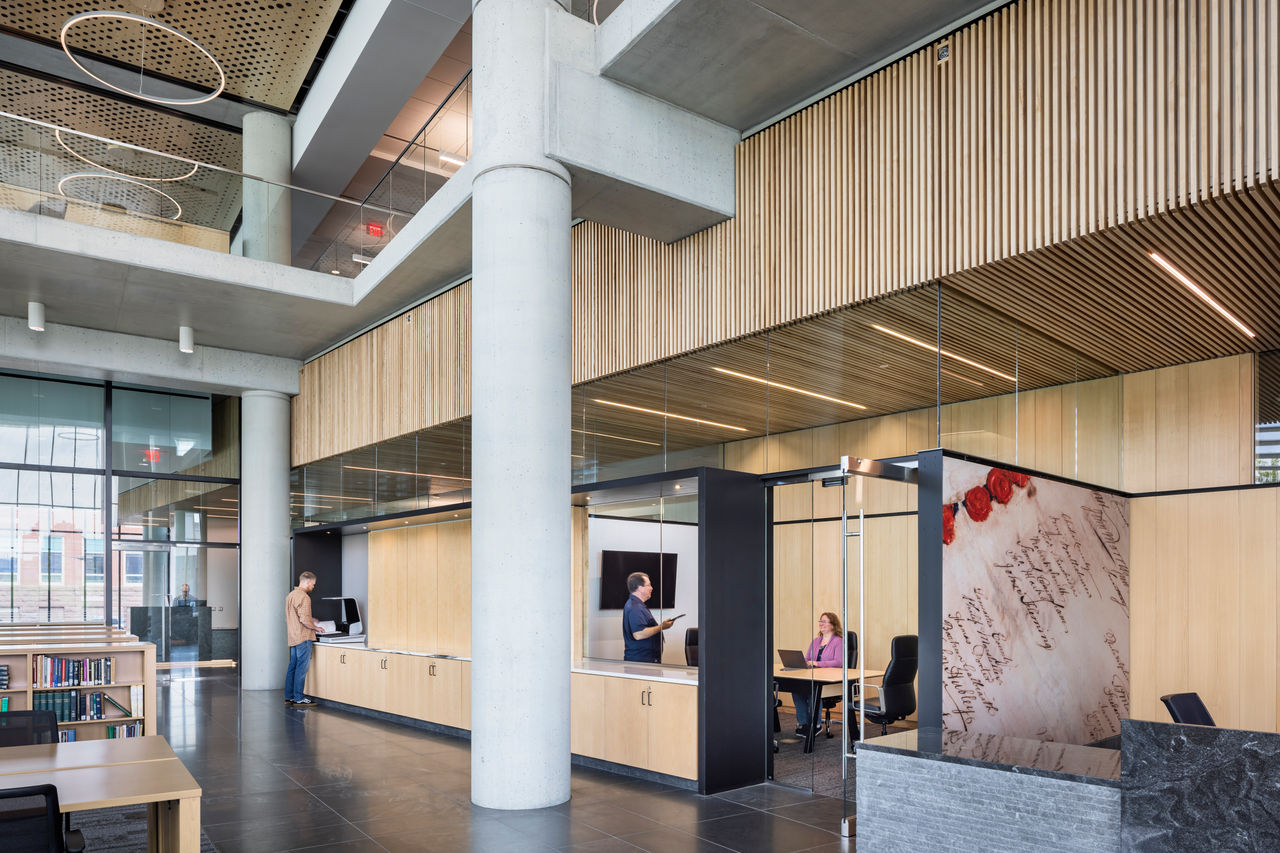
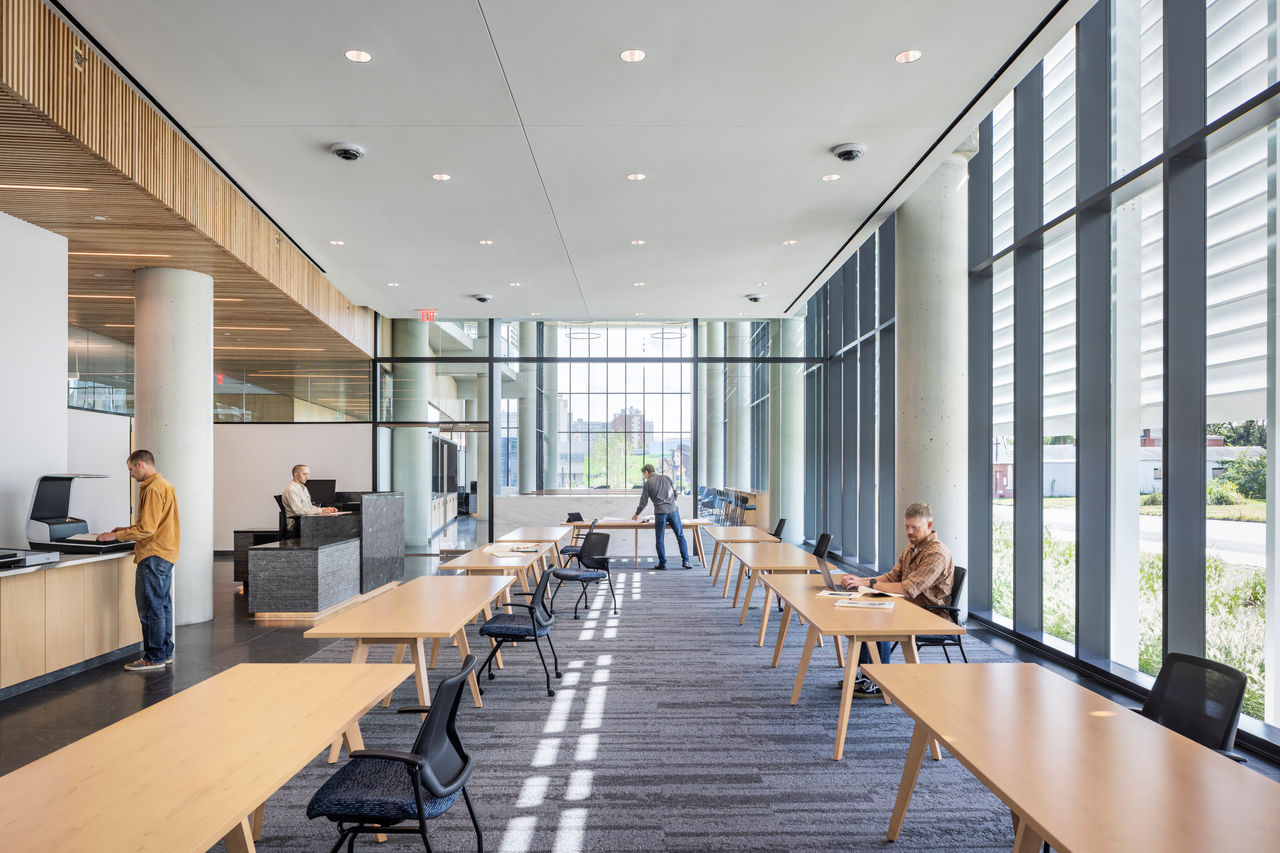
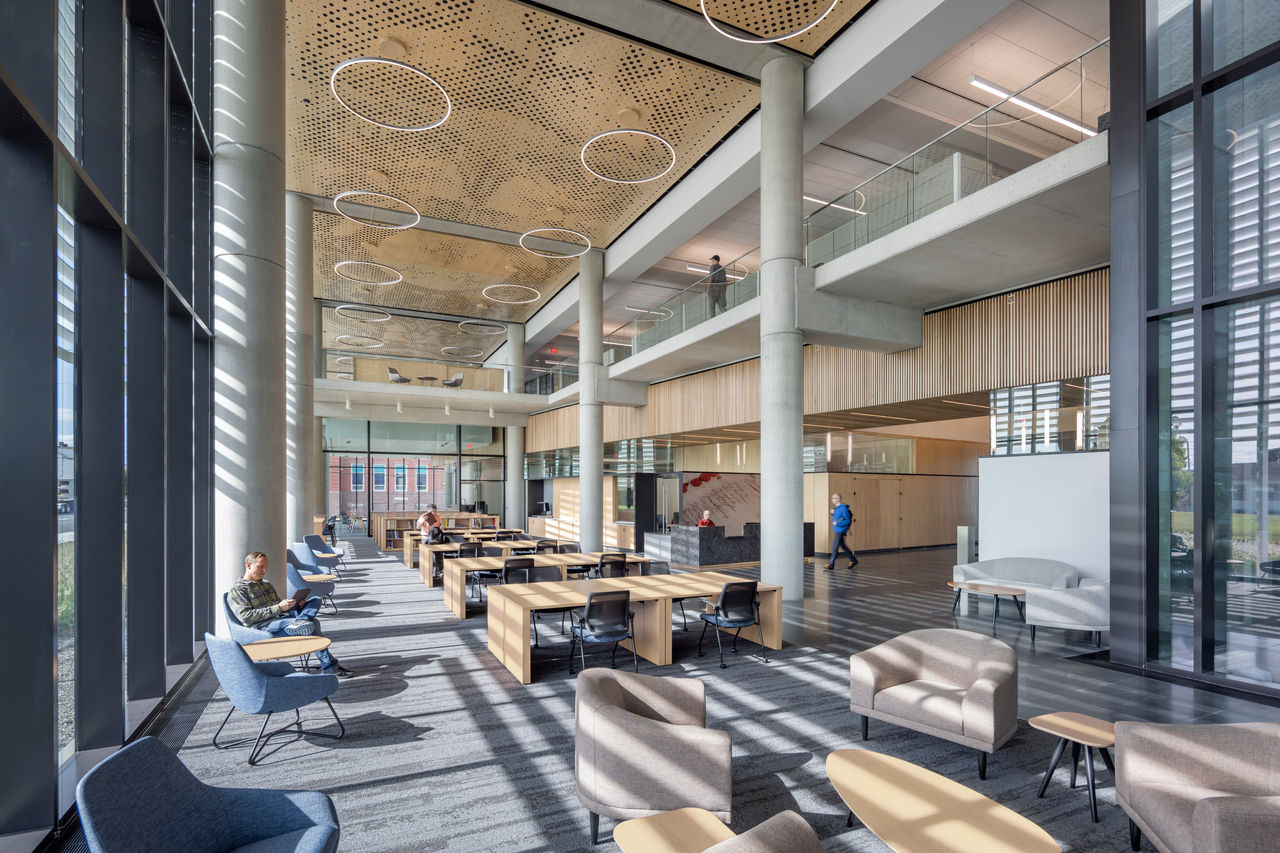
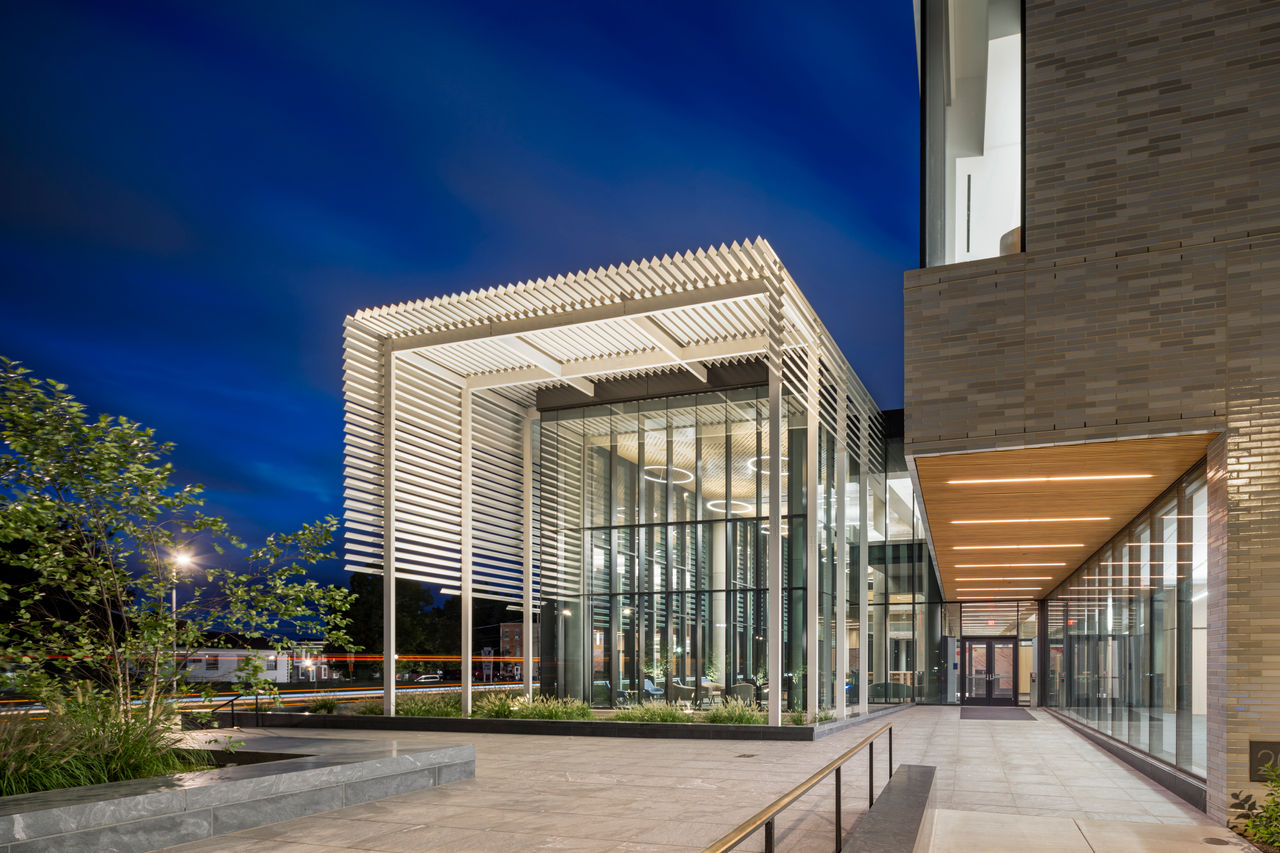
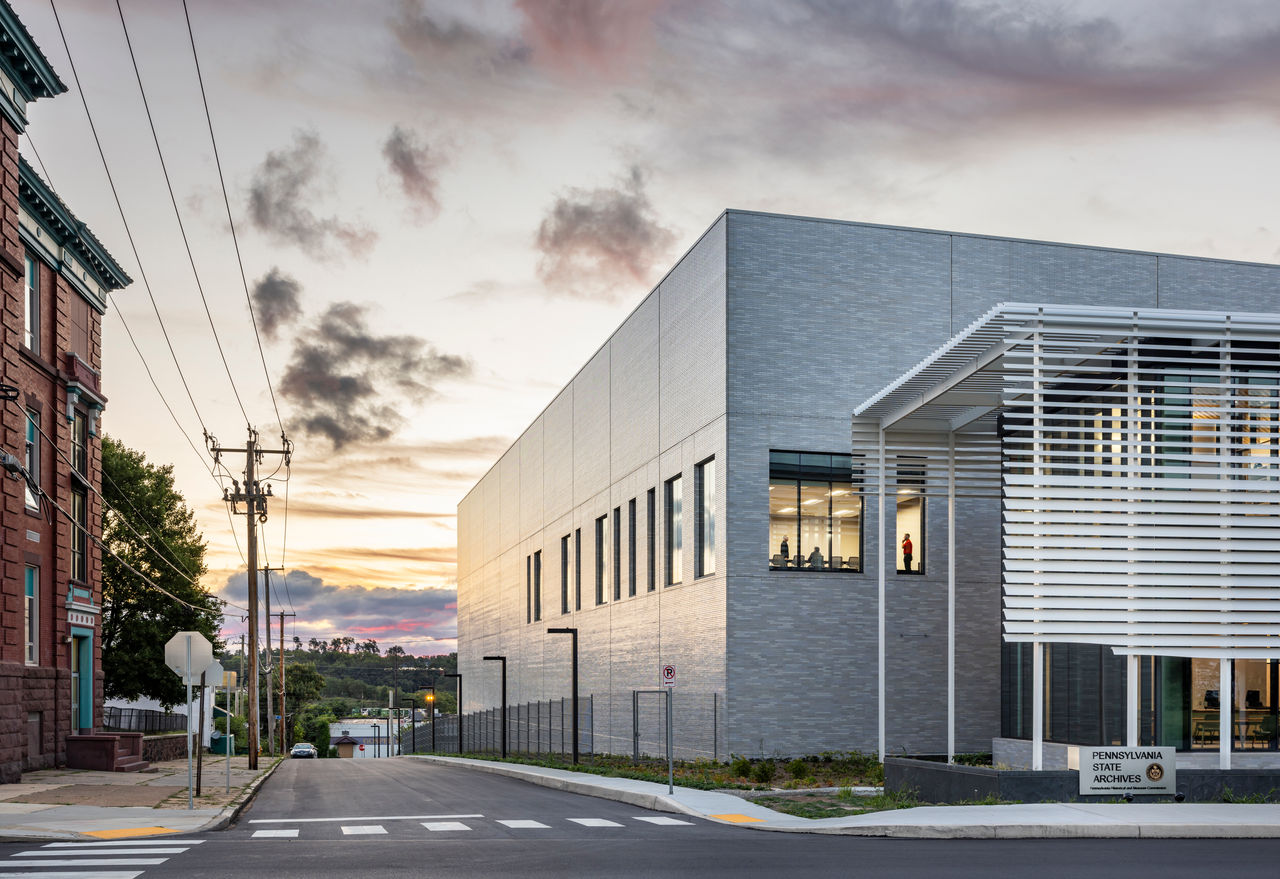
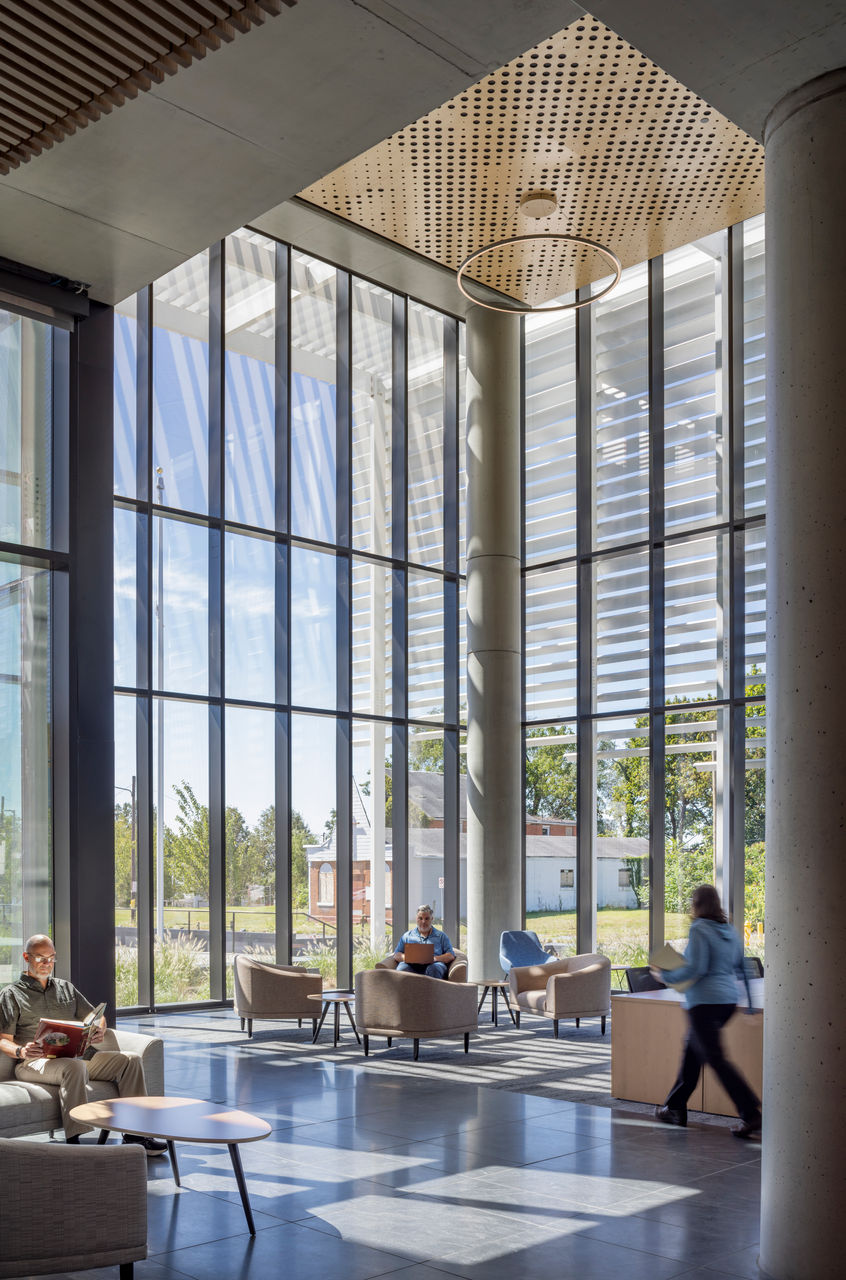
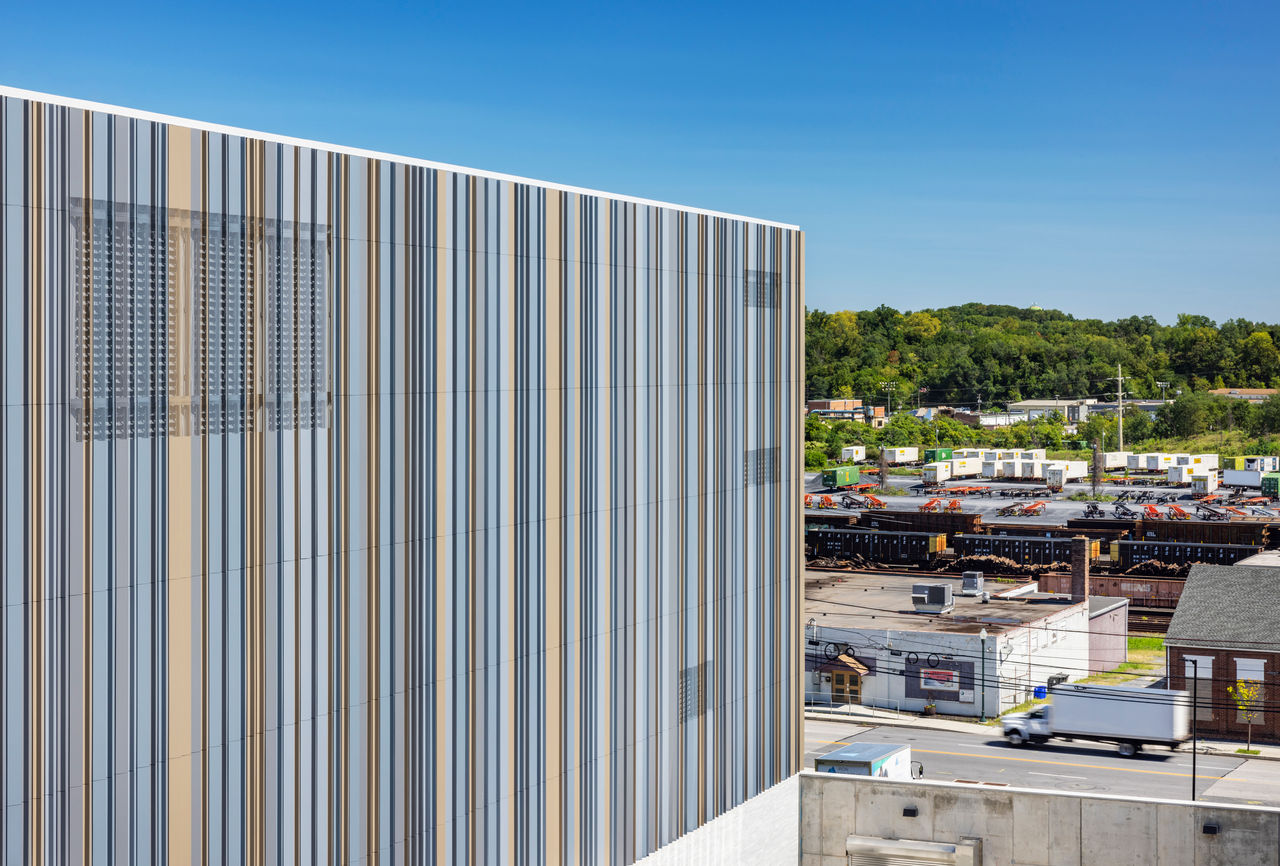
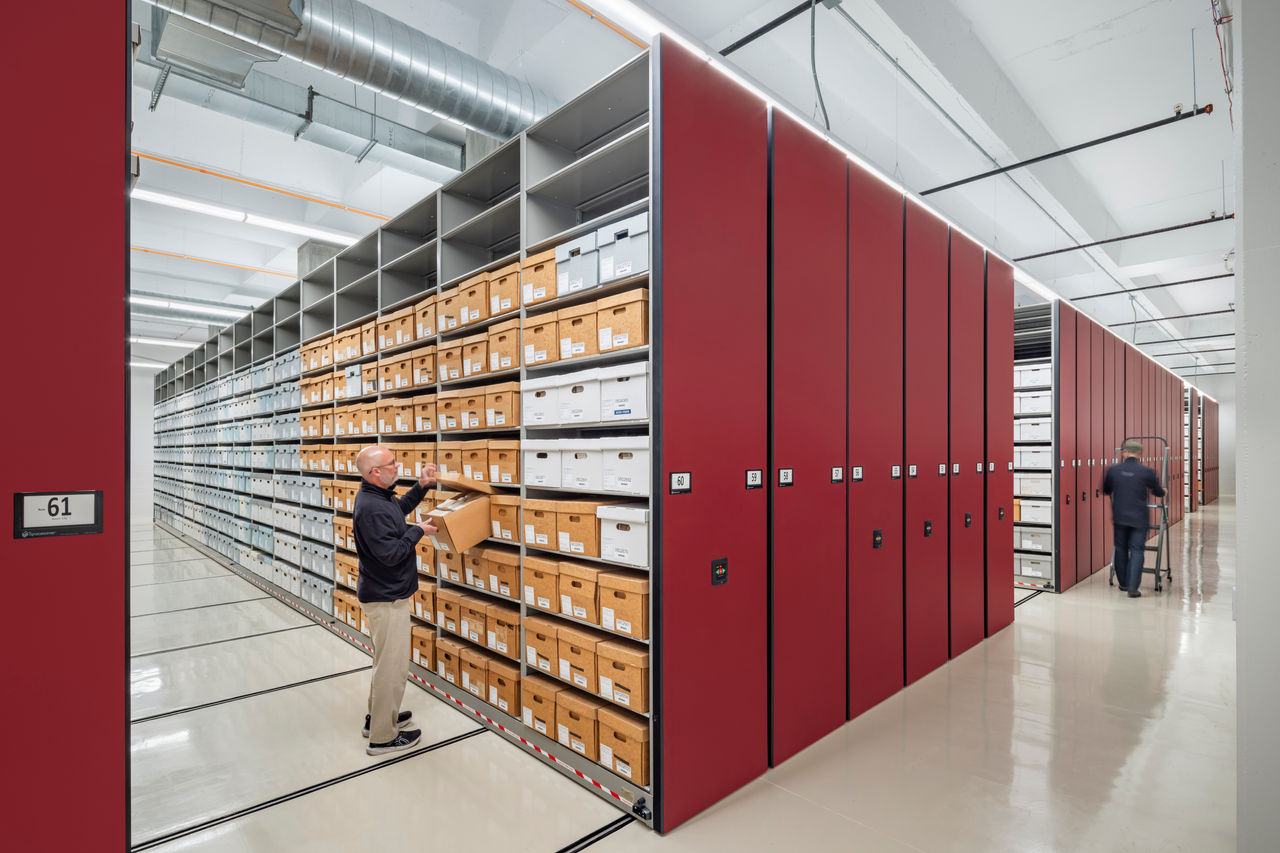
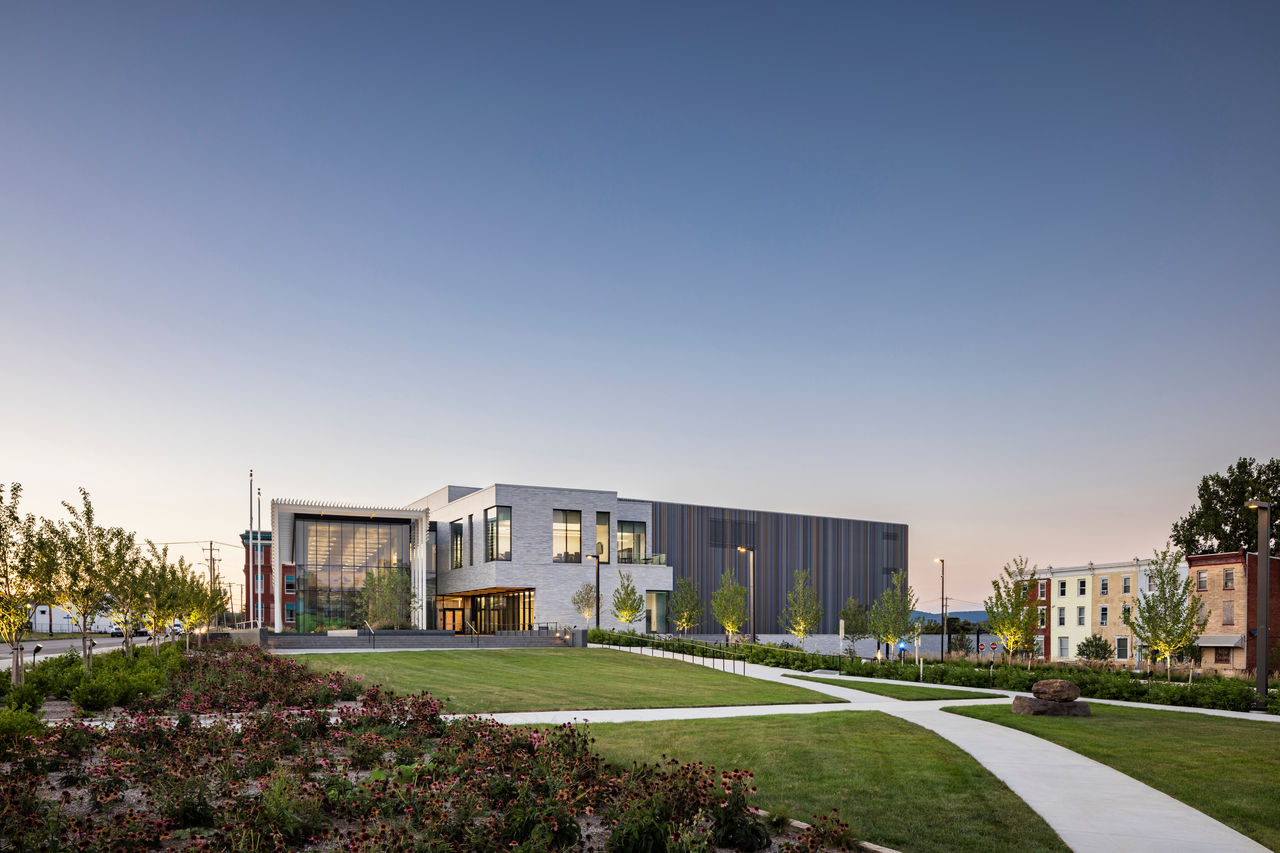
Related Stories
| Sep 2, 2014
Ranked: Top green building sector AEC firms [2014 Giants 300 Report]
AECOM, Gensler, and Turner top BD+C's rankings of the nation's largest green design and construction firms.
| Sep 1, 2014
Ranked: Top federal government sector AEC firms [2014 Giants 300 Report]
Clark Group, Fluor, and HOK top BD+C's rankings of the nation's largest federal government design and construction firms, as reported in the 2014 Giants 300 Report.
| Aug 25, 2014
Restoration of quake-ravaged Atascadero City Hall affirms city’s strength [2014 Reconstruction Awards]
The landmark city hall was severely damaged by the San Simeon earthquake in 2003. Reconstruction renewed the building’s stability, restored its exterior, and improved the functionality of the interior.
| Aug 21, 2014
Ranked: Top convention center AEC firms [2014 Giants 300 Report]
Gensler, AECOM, and Hunt Construction top BD+C's rankings of the nation's largest convention center design and construction firms.
| Aug 20, 2014
Seattle's King Street Station thoughtfully restored [2014 Reconstruction Awards]
After years of neglect and botched renovations, King Street Station sparkles once again.
| Aug 14, 2014
How workplace design can empower employees, businesses
Focusing on recent work at Follett and Zurich, CannonDesign’ Meg Osman reveals the power of research, strategy, change management, and measurement to transform businesses for the better.
| Aug 12, 2014
Design firms invited to submit qualifications for St. Petersburg, Fla., waterfront project
The city of St. Petersburg, Fla., invites firms to submit their ideas for a new and improved pier for Florida's fifth largest city.
| Aug 11, 2014
Air Terminal Sector Giants: Morphing TSA procedures shape terminal design [2014 Giants 300 Report]
The recent evolution of airport terminals has been prompted largely by different patterns of passenger behavior in a post-9/11 world, according to BD+C's 2014 Giants 300 Report.
| Aug 8, 2014
Government Sector Giants: Public-sector construction slow, but stirring [2014 Giants 300 Report]
Improving energy performance of existing properties through targeted upgrades and large-scale reconstruction continues to be a federal priority, according to BD+C's 2014 Giants 300 Report.
| Aug 6, 2014
25 projects win awards for design-build excellence
The 2014 Design-Build Project/Team Awards showcase design-build best practices and celebrate the achievements of owners and design-build teams in nine categories across the spectrum of horizontal and vertical construction.





